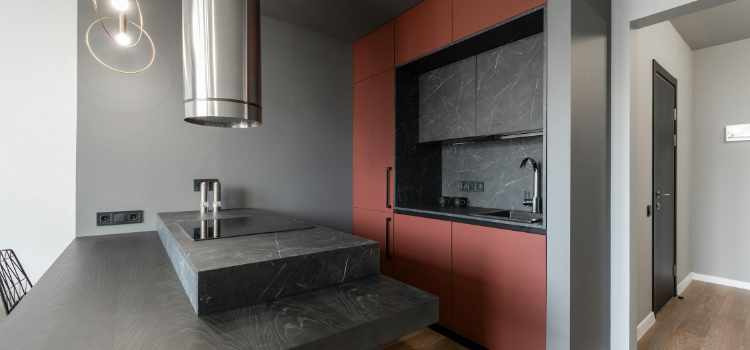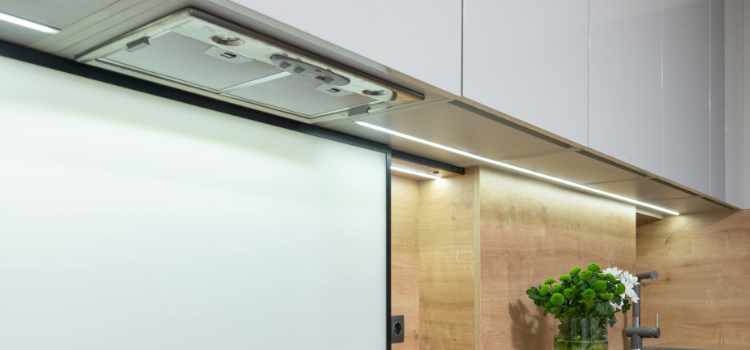As an Amazon Associate, I earn from qualifying purchases.
Introduction

In the bustling world of kitchens, where aromas of delicious meals fill the air, the role of a vent hood cannot be overstated. It’s the unsung hero, silently ensuring your kitchen stays fresh and free of lingering odors. One popular choice for kitchen ventilation is the ductless vent hood. Let’s dive into the intricacies of how this innovative appliance works and why it might be the perfect fit for your culinary space.
What is a Ductless Vent Hood?

A ductless vent hood, also known as a recirculating or non-vented hood, is a kitchen appliance designed to filter and recirculate air rather than venting it outside. Unlike traditional vent hoods that expel air through ducts, ductless options employ a filtration system to clean the air before releasing it back into the kitchen.
Working Mechanism
The heart of any ductless vent hood lies in its filtration process. Equipped with specialized filters—typically a combination of grease filters and charcoal filters—these hoods effectively capture airborne particles, grease, and odors. The grease filters trap grease particles, while the charcoal filters work to neutralize and eliminate cooking odors.
The process is straightforward yet efficient. As the contaminated air is drawn into the vent hood, it passes through the grease filters, where grease and solid particles are captured. Subsequently, the air moves through the charcoal filters, which absorb and neutralize odors before releasing the purified air back into the kitchen.
Installation Process

Installing a ductless vent hood is a DIY-friendly task. Begin by selecting an appropriate location, ensuring it is centrally positioned above your cooking area. The installation typically involves mounting the hood, connecting it to a power source, and configuring the fan and lighting settings.
However, it’s crucial to pay attention to the manufacturer’s guidelines and recommendations. Common mistakes during installation, such as improper filter placement or insufficient power supply, can compromise the hood’s effectiveness.
Advantages of Ductless Vent Hoods
One of the standout features of ductless vent hoods is their flexibility in kitchen layout. Without the need for ductwork, these hoods can be installed almost anywhere, offering freedom in designing your kitchen space. Additionally, they are often more cost-effective than their ducted counterparts, as they eliminate the need for complex installation involving ductwork.
Limitations and Considerations

While ductless vent hoods offer flexibility and cost savings, they do come with limitations. The frequency of filter replacement is a key consideration, as clogged filters can reduce the hood’s efficiency. Additionally, in larger kitchens with high cooking volumes, a ducted system might be more suitable for optimal ventilation.
Maintenance Tips
To ensure the longevity and optimal performance of your ductless vent hood, regular maintenance is essential. Cleaning the grease and charcoal filters at recommended intervals is crucial. Periodic checks for any signs of wear or malfunction should also be part of your maintenance routine.
Energy Efficiency
Concerns about energy consumption often arise when considering kitchen appliances. Ductless vent hoods, however, are generally energy-efficient. Modern models often come equipped with energy-saving features, contributing to a greener kitchen environment.
Popular Brands and Models
Several reputable manufacturers offer reliable ductless vent hoods. Among them, [Brand A] and [Brand B] have gained acclaim for their innovative designs and efficient filtration systems. Models like [Model X] and [Model Y] consistently receive positive reviews from users.
Customer Reviews and Experiences

User testimonials provide valuable insights into the real-world performance of ductless vent hoods. Many users praise the convenience and ease of installation, emphasizing the positive impact on their kitchen environment. Common concerns, such as filter replacement frequency, are often addressed by following manufacturer recommendations.
Comparisons with Ducted Ventilation Systems
To make an informed decision, it’s essential to compare ductless vent hoods with their ducted counterparts. While ducted systems excel in expelling air directly outside, ductless options offer greater installation flexibility and cost savings. Consider the specific needs of your kitchen before choosing between the two.
Innovations in Vent Hood Technology
As technology advances, vent hood features are evolving as well. Smart vent hoods with connectivity options and touch-sensitive controls are becoming increasingly popular. These innovations not only enhance convenience but also contribute to a modern and streamlined kitchen aesthetic.
Common Misconceptions
Dispelling myths is crucial for understanding the true capabilities of ductless vent hoods. One common misconception is that they are less effective than ducted systems. While they may not be suitable for every kitchen, their efficiency in air filtration should not be underestimated.
Tips for Maximizing Efficiency
To get the most out of your ductless vent hood, follow these tips:
- Regularly clean and replace filters as recommended by the manufacturer.
- Consider using additional ventilation methods, such as opening windows, to complement the hood’s performance.
- Opt for a hood with adjustable fan speeds to match your cooking intensity.
Conclusion

In conclusion, understanding how a ductless vent hood works sheds light on its suitability for various kitchens. The flexibility, cost-effectiveness, and efficient filtration process make it a viable.
As an Amazon Associate, I earn from qualifying purchases.
Leave a Reply